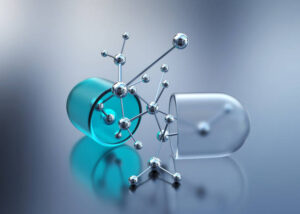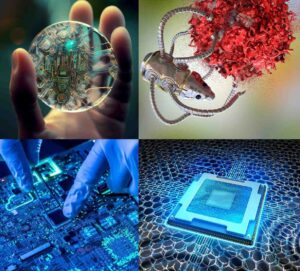Nanotechnology
Introduction
Nanotechnology is a multidisciplinary field that deals with the manipulation and control of matter on an atomic and molecular scale, typically below 100 nanometers. Consequently, this technology holds immense potential for transforming various industries, including medicine, electronics, energy, and materials science.
Historical Background In Nanotechnology
Early Concepts
The concept of nanotechnology was first introduced by physicist Richard Feynman in his 1959 talk, “There’s Plenty of Room at the Bottom,” where he intriguingly discussed the possibility of manipulating individual atoms and molecules.
Development Milestones
- 1981: The invention of the scanning tunneling microscope (STM) by Gerd Binnig and Heinrich Rohrer, therefore, allowed scientists to visualize and manipulate individual atoms.
- 1985: Subsequently, the discovery of fullerenes (buckyballs), a new form of carbon, marked a significant advancement in the field.
Principles of Nanotechnology
1.Scale and Measurement
Nanotechnology operates at the nanoscale, where unique physical, chemical, and biological properties emerge. Specifically, one nanometer (nm) is one-billionth of a meter.
2.Quantum Effects
At the nanoscale, quantum mechanical effects become significantly pronounced, consequently influencing the optical, electrical, and magnetic properties of materials.
Techniques and Tools
Synthesis Methods
- Top-Down Approach: This approach involves breaking down bulk materials into nanosized particles. Specifically, techniques include lithography and milling.
- Bottom-Up Approach: Conversely, this method builds structures atom by atom or molecule by molecule. Notably, methods include chemical vapor deposition (CVD) and molecular self-assembly.
Characterization Techniques
- Scanning Tunneling Microscope (STM): Specifically, it provides atomic-level images of surfaces.
- Atomic Force Microscope (AFM): Additionally, it measures surface topography at the nanoscale.
- Transmission Electron Microscope (TEM): Moreover, it offers high-resolution images of nanoscale structures.
Applications of Nanotechnology
Medicine
Drug Delivery: Nanoparticles can deliver drugs directly to targeted cells, improving efficacy and reducing side effects.
Diagnostics: NanoSensors and nanoprobes enable early detection of diseases at the molecular level.
Therapy: Techniques like photothermal and photodynamic therapy use nanoparticles to treat cancer.

Electronics
- Furthermore, nanoelectronics involves the development of smaller, faster, and more efficient electronic components, such as transistors and memory devices.
- Moreover, quantum dots are utilized in displays and solar cells for enhanced performance.
Energy
- Solar Cells: Additionally, nanomaterials enhance the efficiency of photovoltaic cells.
- Batteries: Furthermore, nanotechnology enhances both the storage capacity and charging speed of batteries.
- Fuel Cells: Moreover, nanocatalysts increase the efficiency and reduce the cost of fuel cells.
Materials Science
- Nanocomposites: Enhanced mechanical, thermal, and electrical properties for use in various industries.
- Self-Cleaning Materials: Surfaces that repel water and dirt, utilizing the lotus effect.
- Superhydrophobic Surfaces: Materials with extreme water repellency for applications in waterproof clothing and anti-icing coatings.

Ethical and Environmental Considerations
Health and Safety
Nanomaterials’ small size and reactivity raise concerns about their potential toxicity and impact on human health.
Environmental Impact
- Nanowaste: The disposal and degradation of nanomaterials need careful management to prevent environmental contamination.
- Sustainable Practices: Development of green nanotechnology aims to create eco-friendly nanomaterials and processes.
Regulatory Framework Governments and international organizations are developing regulations to ensure the safe use and disposal of nanomaterials.
Future Prospects
Emerging Trends
- Nanorobotics: The development of nanoscale robots for medical and industrial applications.
- 3D Nanoprinting: Creating complex nanostructures with potential applications in various fields.
Research and Development
Ongoing research aims to overcome current limitations, such as scalability and cost, and to explore new applications and materials.
Conclusion
Nanotechnology holds transformative potential across various sectors, offering unprecedented capabilities and benefits. However, its advancement must be accompanied by careful consideration of ethical, health, and environmental implications to ensure its sustainable and responsible development.


1 thought on “Nanotechnology: Science of tiny particles & their applications.”